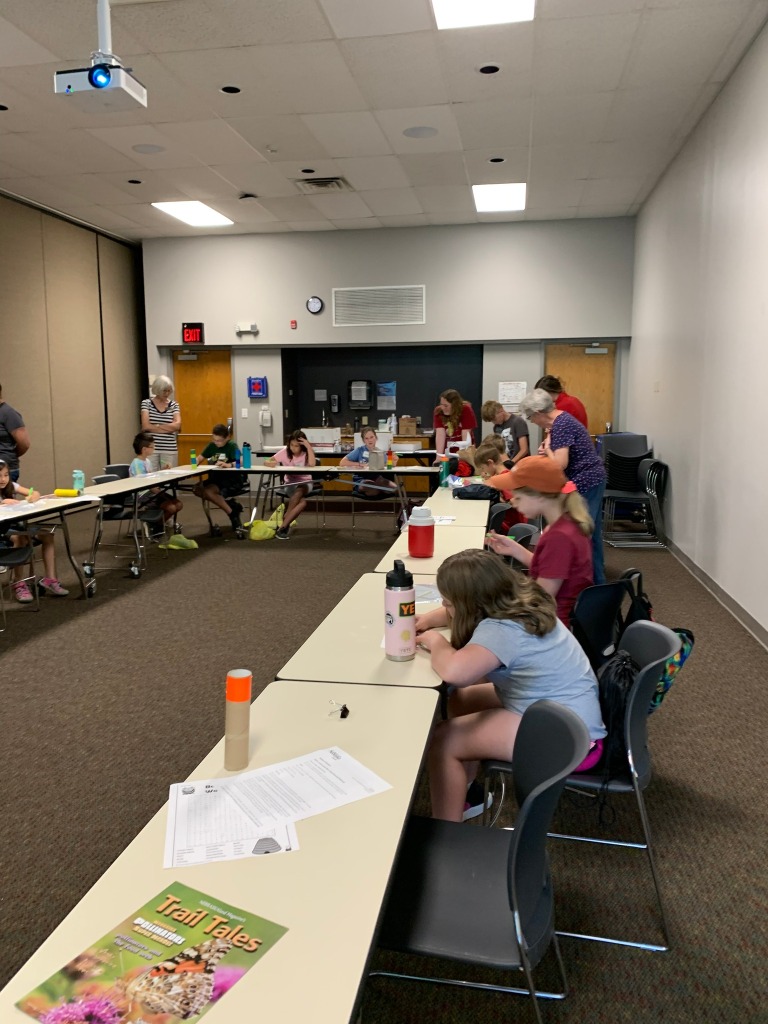Happy Pollinator Week! This week our office is hosting 4-H Clover College. Twelve youth signed up for my session called Pollinator Party. We discussed what crops need pollinators. They looked at the list and circled foods they eat. I then asked them to highlighted a favorite food. I asked how they would feel if they could never have that food again. The shocked look on their faces was clear. They are starting to understand the importance of pollinators.
It was a beautiful day to be out in the Cherry Creek Pollinator Habitat. They notice the native flowers that were blooming. Many were fascinated by the solitary bee house and watching the leaf cutter bees fill the holes that were drilled in the wood blocks. They planted dill and zinnia seeds to benefit caterpillars and butterflies.
After exploring the habitat, each youth made a solitary bee tube house to take home and place in their landscape. It was a fun morning and by the end of the session, the kids had a better understanding of our native pollinators and how their habitat is important to protect.
MJ Frogge


















